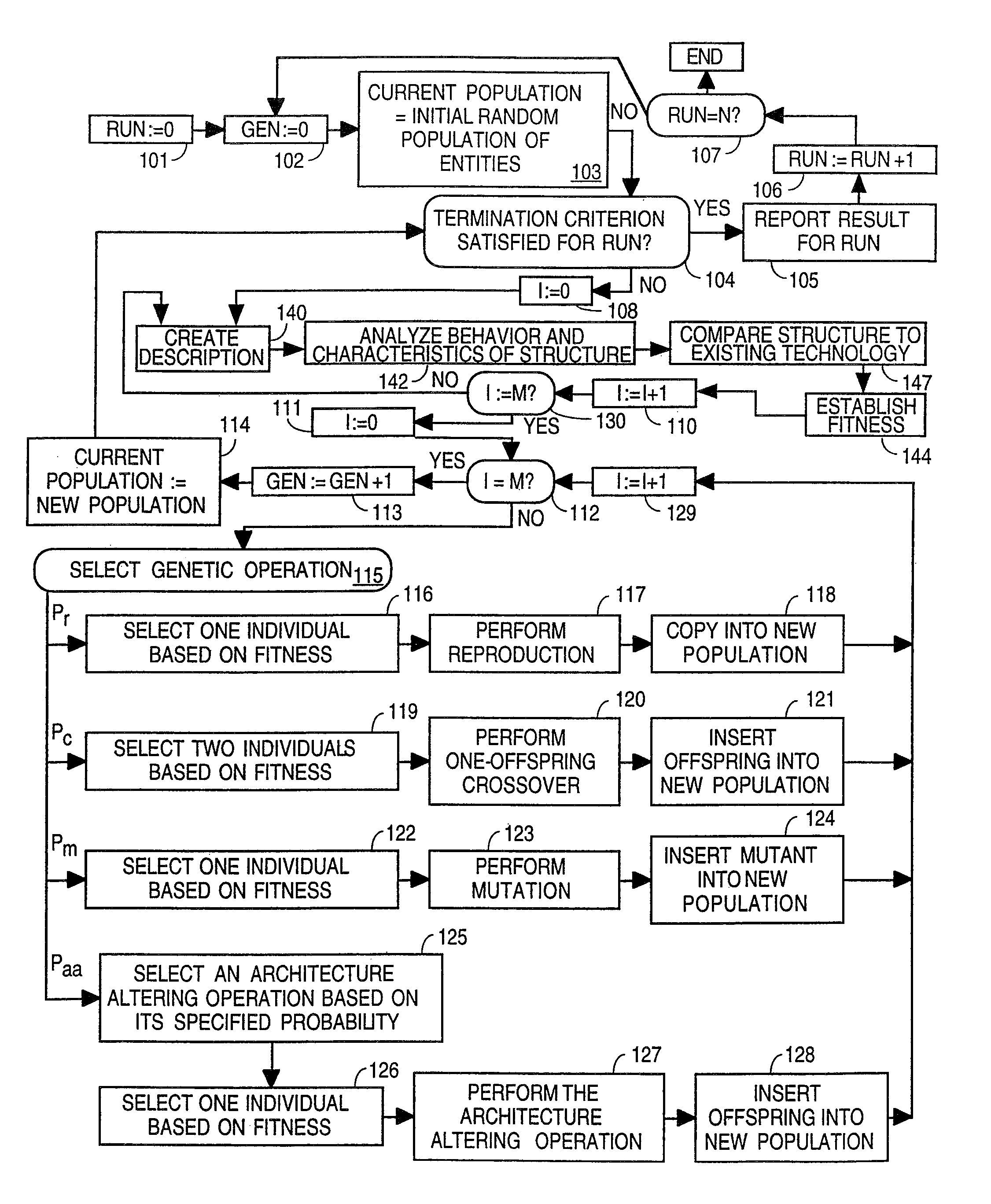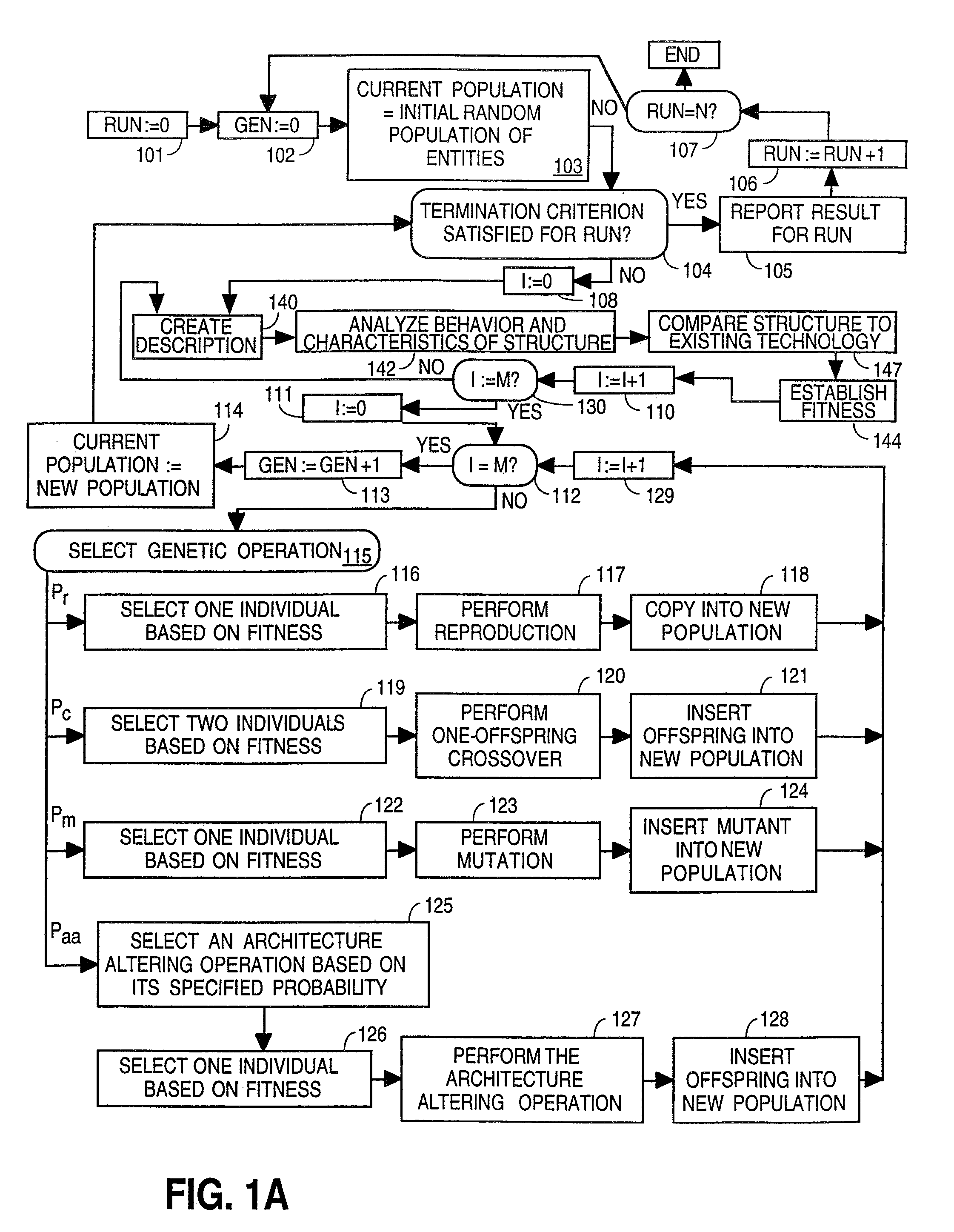Method and apparatus for designing structures
a design structure and design technology, applied in the direction of instruments, digital computers, genealogical algorithms, etc., can solve the problems of large amount of computation required for search techniques, difficult design problems that cannot be solved by analysis or proof, and the inability of analytical methods to solve difficult design problems
- Summary
- Abstract
- Description
- Claims
- Application Information
AI Technical Summary
Benefits of technology
Problems solved by technology
Method used
Image
Examples
Embodiment Construction
[0140]A method and apparatus for the automatic creation of novel design is described. Although the present invention is as cited in terms of electrical circuits, the present invention may be used to design other complex structures such as controllers, antennas, physical structures, mechanical structures, or other complex structures consisting of a plurality of types of components that are interfaced in accordance with a particular topological arrangement and in which the designs created are compared to preexisting technology.
[0141]In the following detailed description of the present invention, numerous specific details are set forth in order to provide a thorough understanding of the present invention. However, it will be apparent to one skilled in the art that the present invention may be practiced without these specific details. In some instances, well-known structures and devices are shown in block diagram form, rather than in detail, in order to avoid obscuring the present inven...
PUM
 Login to View More
Login to View More Abstract
Description
Claims
Application Information
 Login to View More
Login to View More - R&D
- Intellectual Property
- Life Sciences
- Materials
- Tech Scout
- Unparalleled Data Quality
- Higher Quality Content
- 60% Fewer Hallucinations
Browse by: Latest US Patents, China's latest patents, Technical Efficacy Thesaurus, Application Domain, Technology Topic, Popular Technical Reports.
© 2025 PatSnap. All rights reserved.Legal|Privacy policy|Modern Slavery Act Transparency Statement|Sitemap|About US| Contact US: help@patsnap.com



